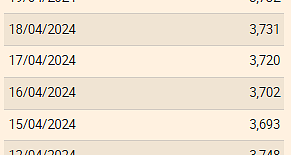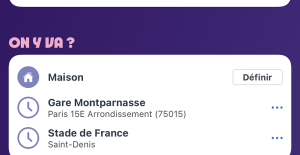The Secret Service published a report detailing 67 thwarted plots.
Targeted violence against colleges is preventable, if the warning signs are identified, according to a new report by the Secret Service released Tuesday.
The report from the Secret Service's National Threat Assessment Center studied 67 thwarted school violence plots and 100 plotters to come up with a framework to further prevent school attacks.
The agency discovered that there were several persistent variables in attacks that were prevented and attacks that happened, such as a history of discipline or law enforcement interaction, if the plotter had experienced bullying or had underlying mental health issues, intended to commit suicide or was affected by childhood conditions.
Schools should intervene as fast as possible, according to the Secret Service.
"We want to make sure we are identifying these children before it gets to the level at which they are engaging in criminal activities, and then face legal implications for this," she explained. "we would like to make sure we're catching them early on when maybe they're becoming more depressed, they're becoming more suicidal."
The Secret Service discovered that 45 percent of the strikes intended, but not completed, were based on a grievance with a classmate.
Additionally, it found that 15 percent of possible attackers needed to kill. By way of instance, according to authorities Matthew Vanderbeek threatened to shoot up his graduation ceremony in 2018.
Pupils are best set to report any concerning behavior of a classmate, '' the report said, but households are critical to identifying troubling behaviour.
From the foiled plots studied by the Secret Service, 69 percent of the communications regarding the programs were detected by students, peers or classmates.
Often times, when reported early, student plotters are able to find treatment rather than criminal prosecution, Althari explained.
"Occasionally we know parents can be in denial," Althari said. "But if it is swiftly explained to them exactly what the goal of the process is which is about helping student have successful outcomes in life."
The report also found that 64% of the student assault plotters had access to firearms and 15 of the foiled plots were set to be run on dates in April -- likely because of the Columbine High School shootingthat happened on April 20 in Colorado.
The Secret Service found that in nearly half of those planned plots, at least one of those co-conspirators had attention in the 1998 shooting at Columbine.
And of the school attackers who proposed but didn't carry out the attack, 85% researched how to get or got weapons. And in nearly all the strikes, the plotter planned to use firearms from the assault itself and 51 percent had planned to use explosives.
The report suggested that 75% of these plotters were found because they hauled their intent and many behaviors were observed and reported on precisely the same day.
In one case, a 17-year-old man was reported to police by a friend after he suggested he wanted to carry out a school shooting.
"The plotter generated cellphone movies in which he discussed his storyline, stating he'd kill more people than Columbine,'' Virginia Tech or the assault from Oslo, Norway," the report says. "The plotter spoke about purchasing an AK-17 using a laser sight, told me that he chased a timer for bombs and showed him a map of colleges ."
A vast majority of the plotters were male, which is consistent with all previous Secret Service research on mass strikes.

 The Euribor today remains at 3.734%
The Euribor today remains at 3.734% Germany: the trial of an AfD leader, accused of chanting a Nazi slogan, resumes this Tuesday
Germany: the trial of an AfD leader, accused of chanting a Nazi slogan, resumes this Tuesday New York: at Columbia University, the anti-Semitic drift of pro-Palestinian demonstrations
New York: at Columbia University, the anti-Semitic drift of pro-Palestinian demonstrations What is Akila, the mission in which the Charles de Gaulle is participating under NATO command?
What is Akila, the mission in which the Charles de Gaulle is participating under NATO command? What High Blood Pressure Does to Your Body (And Why It Should Be Treated)
What High Blood Pressure Does to Your Body (And Why It Should Be Treated) Vaccination in France has progressed in 2023, rejoices Public Health France
Vaccination in France has progressed in 2023, rejoices Public Health France Food additives suspected of promoting cardiovascular diseases
Food additives suspected of promoting cardiovascular diseases “Even morphine doesn’t work”: Léane, 17, victim of the adverse effects of an antibiotic
“Even morphine doesn’t work”: Léane, 17, victim of the adverse effects of an antibiotic MEPs validate reform of EU budgetary rules
MEPs validate reform of EU budgetary rules “Public Transport Paris 2024”, the application for Olympic Games spectators, is available
“Public Transport Paris 2024”, the application for Olympic Games spectators, is available Spotify goes green in the first quarter and sees its number of paying subscribers increase
Spotify goes green in the first quarter and sees its number of paying subscribers increase Xavier Niel finalizes the sale of his shares in the Le Monde group to an independent fund
Xavier Niel finalizes the sale of his shares in the Le Monde group to an independent fund Owner of Blondie and Shakira catalogs in favor of $1.5 billion offer
Owner of Blondie and Shakira catalogs in favor of $1.5 billion offer Cher et Ozzy Osbourne rejoignent le Rock and Roll Hall of Fame
Cher et Ozzy Osbourne rejoignent le Rock and Roll Hall of Fame Three months before the Olympic Games, festivals and concert halls fear paying the price
Three months before the Olympic Games, festivals and concert halls fear paying the price With Brigitte Macron, Aya Nakamura sows new clues about her participation in the Olympics
With Brigitte Macron, Aya Nakamura sows new clues about her participation in the Olympics Skoda Kodiaq 2024: a 'beast' plug-in hybrid SUV
Skoda Kodiaq 2024: a 'beast' plug-in hybrid SUV Tesla launches a new Model Y with 600 km of autonomy at a "more accessible price"
Tesla launches a new Model Y with 600 km of autonomy at a "more accessible price" The 10 best-selling cars in March 2024 in Spain: sales fall due to Easter
The 10 best-selling cars in March 2024 in Spain: sales fall due to Easter A private jet company buys more than 100 flying cars
A private jet company buys more than 100 flying cars This is how housing prices have changed in Spain in the last decade
This is how housing prices have changed in Spain in the last decade The home mortgage firm drops 10% in January and interest soars to 3.46%
The home mortgage firm drops 10% in January and interest soars to 3.46% The jewel of the Rocío de Nagüeles urbanization: a dream villa in Marbella
The jewel of the Rocío de Nagüeles urbanization: a dream villa in Marbella Rental prices grow by 7.3% in February: where does it go up and where does it go down?
Rental prices grow by 7.3% in February: where does it go up and where does it go down? Europeans: “All those who claim that we don’t need Europe are liars”, criticizes Bayrou
Europeans: “All those who claim that we don’t need Europe are liars”, criticizes Bayrou With the promise of a “real burst of authority”, Gabriel Attal provokes the ire of the opposition
With the promise of a “real burst of authority”, Gabriel Attal provokes the ire of the opposition Europeans: the schedule of debates to follow between now and June 9
Europeans: the schedule of debates to follow between now and June 9 Europeans: “In France, there is a left and there is a right,” assures Bellamy
Europeans: “In France, there is a left and there is a right,” assures Bellamy These French cities that will boycott the World Cup in Qatar
These French cities that will boycott the World Cup in Qatar Serie A: Bologna surprises AS Rome in the race for the C1
Serie A: Bologna surprises AS Rome in the race for the C1 Serie A: Marcus Thuram king of Italy, end of the debate for the position of number 9 with the Blues?
Serie A: Marcus Thuram king of Italy, end of the debate for the position of number 9 with the Blues? Milan AC-Inter Milan: Thuram and Pavard impeccable, Hernandez helpless… The tops and flops of the derby
Milan AC-Inter Milan: Thuram and Pavard impeccable, Hernandez helpless… The tops and flops of the derby Ligue 2: Auxerre leader, Bordeaux in crisis, play-offs... 5 questions about an exciting end of the season
Ligue 2: Auxerre leader, Bordeaux in crisis, play-offs... 5 questions about an exciting end of the season


















